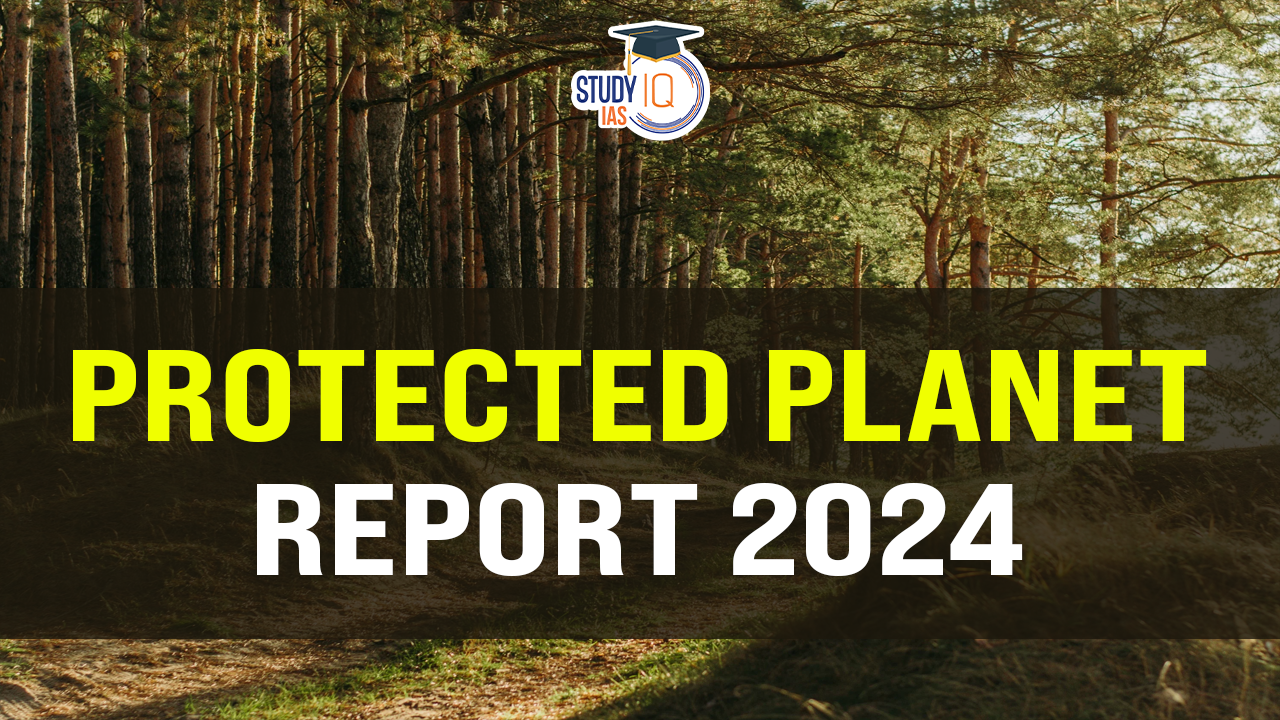Table of Contents
The Protected Planet Report 2024 was unveiled during the COP16 summit, providing critical updates on global biodiversity conservation efforts. This report primarily tracks progress against the Kunming-Montreal Global Biodiversity Framework (KMGBF), particularly the ambitious 30×30 target, which aims to protect 30% of terrestrial and marine areas by the year 2030.
Understanding the key findings and implications of this report is essential for UPSC aspirants, particularly those focusing on environmental issues, biodiversity, and sustainable development.
Objectives of Protected Planet Report
The Protected Planet Report serves as a benchmark for assessing global efforts to conserve biodiversity and protect vital ecosystems. The following objectives outline the report’s significance:
- Tracking Progress: The report evaluates the global progress in establishing protected areas, offering insights into how nations are adhering to international biodiversity targets.
- Highlighting Challenges: It identifies challenges faced in achieving the 30×30 target and provides recommendations for enhancing the effectiveness of protected areas.
- Promoting Sustainable Practices: The report emphasizes the importance of sustainable agricultural and land management practices to balance ecological health and human development.
Current State of Protected Areas
As of the report’s release, the following statistics underscore the progress and gaps in global biodiversity protection:
- Terrestrial and Inland Waters: Currently, 17.6% of terrestrial and inland water bodies are under protection. This marks a notable increase from 16.64% in May 2021.
- Marine Areas: Approximately 8.4% of marine areas are protected, up from 7.74% in 2021. To meet the 30×30 target, protection levels must double for land and triple for marine ecosystems by 2030.
Global Performance Metrics
The report reveals that while some countries excel in biodiversity conservation:
- 51 countries have exceeded the 30% protection target for land areas.
- 31 countries have met this target for marine environments.
- Over two-thirds of Key Biodiversity Areas (KBAs) are partially protected, highlighting both achievements and areas needing further action.
However, concerning trends remain:
- Less than 20% of critical ecosystem areas are currently protected.
- Only a quarter of ecoregions have more than 30% of their land area designated as protected.
Focus on Inland Water Protection
For the first time, the report includes data on inland water bodies, revealing:
- Wetlands: 16.5% of global wetlands are under protection.
- Rivers and Streams: 18% of rivers and streams are protected, yet significant areas remain vulnerable.
Additionally, only 2.8% of marine protected areas are classified as highly protected zones, which severely restrict extractive activities, highlighting a critical gap in marine conservation efforts.
Governance and Indigenous Lands
One of the report’s alarming findings is the lack of governance assessments for protected areas:
- Only 0.22% of land and 0.001% of marine areas have undergone governance evaluations.
- Indigenous and traditional territories cover 13.6% of the global land area, but only 3.95% of protected areas are governed by Indigenous Peoples and Local Communities (IPLC). Shared governance accounts for 11.84% of these areas.
This underscores the need for inclusive governance models that recognize and empower local and Indigenous communities in conservation efforts.
Challenges and Recommendations
Achieving the 30×30 target poses several challenges:
- Connectivity and Effectiveness: Many protected areas lack connectivity and effective management, hindering biodiversity conservation efforts.
- Funding and Resources: Adequate funding is essential for the establishment and management of protected areas.
- Stakeholder Engagement: Meaningful engagement with local communities, stakeholders, and policymakers is crucial for successful implementation.
The report advocates for integrated approaches that involve multiple stakeholders, emphasizing that isolated efforts will not yield the desired outcomes.
The Role of Livestock in Soil Health and Biodiversity
In a related context, the report also discusses the role of livestock in promoting soil health and biodiversity:
- Research indicates that mixed farms—those combining livestock with crop production—store 33% more soil organic carbon compared to arable-only farms.
- The average organic matter in mixed farms is 5.74%, significantly higher than the 2.54% average in arable-only farms.
This finding highlights the potential of sustainable agricultural practices to contribute to soil health, enhance biodiversity, and support rural communities.
Conclusion
The Protected Planet Report 2024 presents a critical overview of the state of global biodiversity and conservation efforts. For UPSC aspirants, understanding the implications of this report is vital in preparing for questions related to environmental policies, biodiversity conservation, and sustainable development practices.
As India continues to address its biodiversity challenges, integrating the principles outlined in this report can play a pivotal role in shaping effective conservation strategies, ensuring that the country meets its commitments under international frameworks. By promoting sustainable practices and recognizing the importance of governance involving local communities, India can work towards achieving the 30×30 target and preserving its rich biodiversity for future generations.


 Phenome India Project: Mapping India's H...
Phenome India Project: Mapping India's H...
 UDAN Scheme, Objectives, Funding and Ach...
UDAN Scheme, Objectives, Funding and Ach...
 Indus Water Treaty 1960 Suspended by Ind...
Indus Water Treaty 1960 Suspended by Ind...





















